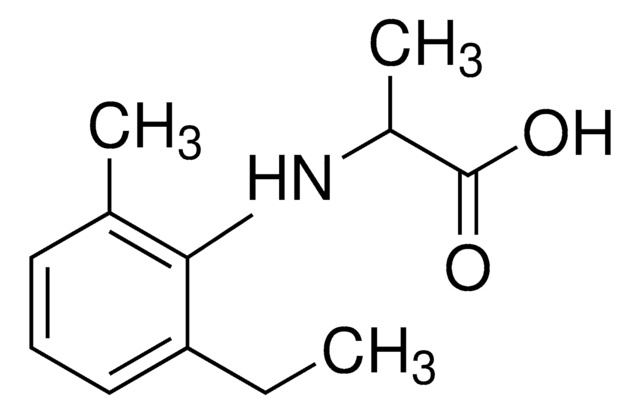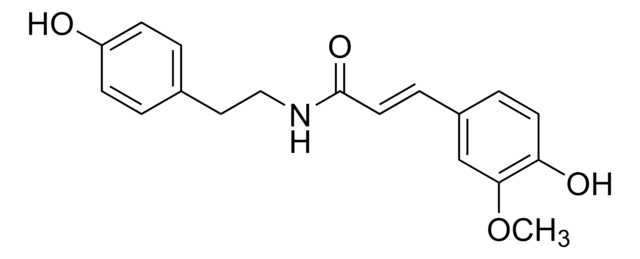33657
2,3,4,5-Tetrachloroaniline solution
100 μg/mL in acetonitrile, analytical standard
Sign Into View Organizational & Contract Pricing
All Photos(1)
About This Item
Empirical Formula (Hill Notation):
C6H3Cl4N
CAS Number:
Molecular Weight:
230.91
EC Number:
MDL number:
UNSPSC Code:
41116107
PubChem Substance ID:
Recommended Products
grade
analytical standard
shelf life
limited shelf life, expiry date on the label
concentration
100 μg/mL in acetonitrile
technique(s)
HPLC: suitable
gas chromatography (GC): suitable
application(s)
environmental
format
single component solution
storage temp.
2-8°C
SMILES string
Nc1cc(Cl)c(Cl)c(Cl)c1Cl
InChI
1S/C6H3Cl4N/c7-2-1-3(11)5(9)6(10)4(2)8/h1H,11H2
InChI key
GBKZRUCVLTWAML-UHFFFAOYSA-N
Application
Refer to the product′s Certificate of Analysis for more information on a suitable instrument technique. Contact Technical Service for further support.
Signal Word
Danger
Hazard Statements
Precautionary Statements
Hazard Classifications
Acute Tox. 4 Dermal - Acute Tox. 4 Inhalation - Acute Tox. 4 Oral - Eye Irrit. 2 - Flam. Liq. 2
Storage Class Code
3 - Flammable liquids
WGK
WGK 2
Flash Point(F)
35.6 °F
Flash Point(C)
2 °C
Personal Protective Equipment
dust mask type N95 (US), Eyeshields, Gloves
Choose from one of the most recent versions:
Already Own This Product?
Find documentation for the products that you have recently purchased in the Document Library.
W de Wolf et al.
The Science of the total environment, 109-110, 457-459 (1991-12-01)
The lethal body burden (LBB) of 2,3,4,5-tetrachloroaniline in guppy (Poecilia reticulata), exposed for up to 14 days, has been determined at different aqueous concentrations of the test compound. It was found that the LBB is not constant during these 14
W de Wolf et al.
The Science of the total environment, 109-110, 383-386 (1991-12-01)
In this study the elimination kinetics of several chlorinated anilines and a tetrachlorobenzene in guppy, Poecilia reticulata, have been determined. The elimination of all the chlorinated anilines in fish showed a bi-phasic pattern, whereas the elimination characteristics of the tetrachlorobenzene
Didem Okutman Tas et al.
Environmental science & technology, 42(9), 3234-3240 (2008-06-05)
The effect of nitrate reduction onthe reductive biotransformation of pentachloronitrobenzene (PCNB), an organochlorine fungicide, was assessed with a mixed fermentative/methanogenic culture enriched from a contaminated estuarine sediment. Glucose and methanol served asthe electron and carbon source. PCNB at an initial
Our team of scientists has experience in all areas of research including Life Science, Material Science, Chemical Synthesis, Chromatography, Analytical and many others.
Contact Technical Service










